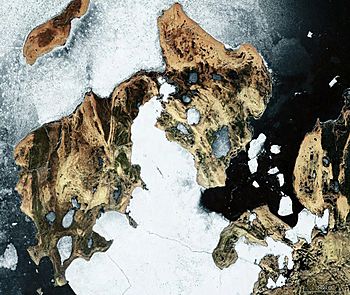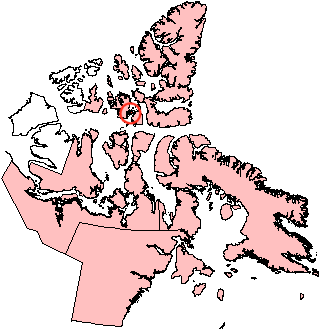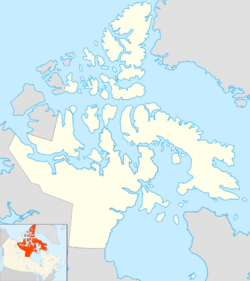Little Cornwallis Island facts for kids

Satellite view
|
|

Little Cornwallis Island, Nunavut
|
|
| Geography | |
|---|---|
| Location | McDougall Sound |
| Coordinates | 75°30′N 096°30′W / 75.500°N 96.500°W |
| Archipelago | Queen Elizabeth Islands Canadian Arctic Archipelago |
| Area | 412 km2 (159 sq mi) |
| Length | 36 km (22.4 mi) |
| Width | 32 km (19.9 mi) |
| Administration | |
|
Canada
|
|
| Nunavut | Nunavut |
| Region | Qikiqtaaluk |
| Demographics | |
| Population | 0 |
| Ethnic groups | Inuit |
Little Cornwallis Island is a small island in the Canadian Arctic. It's part of Nunavut, Canada. You can find it between Cornwallis Island and Bathurst Island in a place called McDougall Sound. The island covers about 412 square kilometers (159 square miles). No people live on Little Cornwallis Island today.
Contents
Little Cornwallis Island: A Mining Story
Little Cornwallis Island was once home to the Polaris Mine. This was the most northern mine in the world that dug for "base metals." Base metals are common metals like zinc and lead.
The Polaris Mine: Discovery and Development
Finding the Minerals
In 1960, people were mapping the island to look for oil. Instead, they found a huge amount of zinc and lead. A company called Cominco bought land in the area. In 1970, a special survey using gravity found a big hidden area. By 1973, drilling and digging underground showed a large amount of valuable rock, called an "ore body." This ore body had about 25 million tons of rock. It contained about 14% zinc and 4% lead.
Building the Mine
Building a mine in the Arctic is very hard! The main part of the mine was built on a huge floating platform, like a giant boat. This platform was built far away in Trois-Rivières, Quebec, Canada. It was then pulled all the way to Little Cornwallis Island. It arrived in August 1981.
Life at the Mine
The Polaris Mine started working in 1982. It had a long gravel runway, about a mile long. This runway was big enough for large airplanes like the Boeing 727 and Boeing 737. These planes brought supplies and workers to the mine. The mining company also had a camp on the island. This camp provided places for the miners to live. Communication services were provided by Bell Canada and later by Northwestel.
Closing the Mine
The mine was expected to run out of minerals. It closed in August 2002, just as planned. From 1982 to 2002, the mine processed 21 million tons of ore. This produced a lot of metal: 733,800 tons of lead and 2.8 million tons of zinc.
After the mine closed, a big clean-up project began. This project cost $53 million and took two years. It was called a "decommissioning and reclamation program." This means they took apart the mine and cleaned up the land. The clean-up was finished in September 2004.



